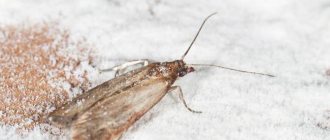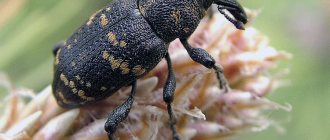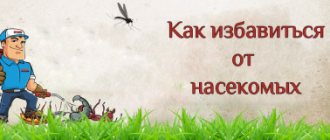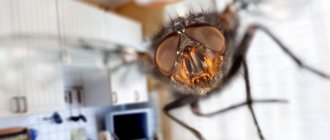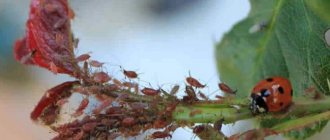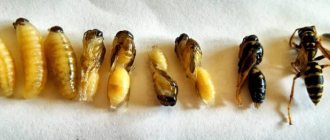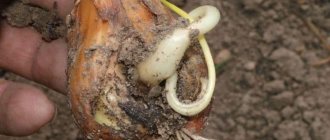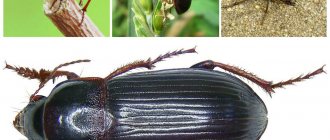Causes of soil pests of potatoes
Preventing pests is much easier than fighting them. To do this, you need to know why they appear in the soil. Generally, there are three main reasons.
- Brought soil. Pests can enter the site with soil that was brought to the site.
- Compost. This fertilizer is very often used by gardeners and does not take into account that many pests overwinter in the compost site and lay eggs.
- Manure. The mole cricket and many other pests are very fond of such an environment and actively reproduce in it.
It is important to protect the crop from pests
Important! Regular waterlogging of the soil can also aggravate the problem. In nutritious and moist soil, pests settle and reproduce more readily. If it rains, it is better not to water the garden.
It is equally important to follow the rules of crop rotation. You cannot plant potatoes in one area for several years. This will lead to an increase in the number of pests. It is also necessary to destroy (burn) tops and other waste after harvesting.
General control and prevention measures
From the above reasons for the appearance of pests in the soil, several general recommendations follow that will help prevent the appearance of pests in the soil. To do this you need:
- shovel heaps of compost or manure in winter;
- bring only clean and uncontaminated soil to the site;
- Use rotted manure rather than fresh manure.
Following these simple rules will help prevent pests from appearing in the soil and eliminate the need to deal with them.
Prevention of rodents
To prevent pests from infesting, it is necessary to carry out a set of measures. First of all, make the entrance to the room inaccessible. Carefully inspect the storage area and identify places where rodents can enter. This could be the floor, walls, ventilation hole (even covered from the outside).
If passages, cracks, holes, or burrows are found, they are filled with cement, or they can be tightly covered with stones. It is advisable to concrete the earthen floor or turn it over with broken glass, followed by backfilling with earth (the method is cheap and effective).
It is useful to cover the doors with sheets of metal on both sides. All lids must fit well and close tightly. Cover the ventilation pipe and all vents with a metal grill or mesh on the inside and outside.
Additional measures that create uncomfortable conditions for pests will not hurt:
- If they enter the cellar, they should not find access to food. It is advisable to place tubers in an airtight container. Can be stored in nets in a suspended state.
- Line the bottom and walls of the potato compartment with juniper or pine branches. They also cover the laid potatoes on top.
- Scatter regular ash on the floor. It sticks to the paws and fur, and from there gets on the mucous membranes of animals, adversely affecting them.
- It is better to green seed potatoes, then pests will not touch them.
There are many effective ways to protect potatoes from rodents. Having thought through and organized a system for preserving the crop well, you don’t have to worry that someone else will eat the potatoes and not you.
If you find an error, please select a piece of text and press Ctrl+Enter.
What parasites chew out tubers from the inside?
Parasites that gnaw tunnels in potatoes are very dangerous. With such damage, root crops cannot be stored, and they cannot be used in the future as planting material.
There are four types of parasites that pose a danger to potatoes:
- mole cricket;
- wireworm;
- click beetle;
- potato moth (fluorimea).
To know how to deal with them correctly, you must first of all have an idea of what kind of larvae eat potatoes and who eats the potatoes from the inside in the ground.
Medvedka
This is a rather large insect that belongs to the Orthoptera family. Both the pest itself and its larvae have a very unpleasant appearance. During the season, a mole cricket can lay 400-500 eggs.
Medvedka
This pest can not only damage potato tubers, but also the roots of all crops on the site. Very often, young seedlings suffer from this particular pest, since it gnaws the stems of the seedlings while digging tunnels.
For reference! The mole cricket prefers to overwinter in a pile of manure or compost and lay eggs there.
Wireworm
This pest is a worm up to 3 cm long, yellow or light brown in color. It is the larva of a click beetle. Getting rid of wireworms is quite problematic.
Wireworm
This pest is dangerous because it not only damages potato tubers, but also the stems. This parasite also poses a threat to other plants on the site.
Fighting methods
The main means of reducing the population of wireworms on a site is their physical destruction. How to destroy:
- Removing any larvae that come across when digging the ground.
- Installation of traps and bait on the site.
Traps can be as simple as digging 0.5 liter glass jars into the soil. up to the necks, and put pieces of raw potatoes in them. It is necessary to check the traps every 2-3 days, collecting and destroying the wireworms that have accumulated in them. On average, 1 trap is installed per 1 m2.
A little trick: if you don’t have the right amount of cans, you can put peeled potato tubers on a long rod and dig them into the ground. The protruding twigs will be marks where the bait is buried. Every day you need to collect pests from the baits, and once a week you need to replace the baits themselves.
It’s a good idea to attract wireworm’s natural enemies to the site: birds (tits, wagtails, starlings), frogs, and ground beetles among insects. Therefore, we put up birdhouses and make a small pond (even a basin of water sunk into the ground is quite suitable).
In the spring, you can put bait for beetles. To do this, you need to put an oilcloth or board on the ground, onto which very thick sugar syrup is poured. The beetles will flock to the scent and remain glued.
If you are wondering where wireworms come from, then this is the place for you. The article describes in detail click beetles, whose larvae we call wireworms.
Ways and means of struggle
Each of these pests can be controlled using mechanical or chemical methods. The choice of method depends both on the pest itself and the scale of the infestation. It is possible to destroy insects manually only if their numbers are small, and if a large area is infested, it is impossible to do without the use of chemicals.
Mechanical methods
This method is most applicable in the fight against mole crickets and wireworms, or rather the click beetle.
To combat mole crickets, several options are applicable:
- destruction of larvae and eggs during digging;
- setting traps with poison or bait;
- shoveling compost and manure in winter.
Important! If there is a compost site on the site, it must be shoveled in winter during periods of especially low temperatures. When exposed to frost, mole cricket eggs and adults will die.
There is another effective method that has been proven over the years. In the second half of September, holes are dug 50-60 cm deep and filled with warm horse manure. The mole crickets will definitely settle in these pits for the winter. With the onset of frost, manure is removed from the pits and distributed in one layer. When exposed to low temperatures, mole crickets and their eggs die.
It is impossible to fight the wireworm mechanically, but the beetle itself, the click beetle, should be destroyed when detected. You can also install special baits on the site.
Chemical methods
Chemical control methods include treating the soil with preparations that destroy pests. Also, for prevention, you can treat the tubers before planting.
Important! If pests were detected in the phase of active development of plantings, then treatment is carried out by spraying the plants with insecticides.
Colorado beetle
Description of the insect
Anyone who grows potatoes is familiar with this dangerous pest. The beetle, 8–12 mm long, brown-yellow in color with black longitudinal stripes, roughly eats the leaves and stems of potatoes, sometimes leaving only short shoots from the bush. The larvae are especially voracious - orange-red, with a black head and black stripes on the sides. During the period of maturation, a colony of several dozen “babies” on one bush can reduce the yield by 50%, or even completely destroy the plant.
The most favorable period for the Colorado potato beetle is the period of budding and flowering, when tubers begin to form. The mass emergence of larvae occurs precisely at this time.
Control measures
- Three-time treatment of crops with systemic chemicals (Commander, Sonet, Iskra DE, Aktara, Mospilan, etc.). The last treatment with pesticides should be carried out no later than 20 days before digging up the tubers.
- Spraying with preparations of fungal or bacterial origin (Fitoverm, Agrovertin, Boverin, etc.). These products are especially effective against young larvae. The effect of biological agents increases and is maximally manifested on the 5th–7th day. Processing of plantations should be carried out as new larvae appear.
Folk remedies in the fight against the Colorado potato beetle, although safe, are not as effective as chemicals. Nevertheless, gardeners also use them to save the harvest:
- manual collection of adult beetles and larvae, as well as destruction of eggs;
- spraying the bushes with strong infusions of basil, mint, tansy, black currant leaves, poplar when the first shoots appear. Such treatments must be carried out a couple more times per season;
- joint planting of potatoes with crops that repel female beetles: coriander, beans, bush beans;
- planting several home-grown bushes before the main sowing of the plantation to concentrate a large number of larvae on older plants. This method will make it easy to collect pests and allow the main bushes to enter the tuberization stage without loss.
Potato pancake
The pest's habitat is steppe areas located from Austria to the Japanese Islands. Spankies feed on green leaves and stems of many cultivated plants: potato tops, young sprouts of vegetables, legumes.
Description and characteristics:
- family - Coleoptera beetles, subfamily - blister beetles;
- dimensions - adult individuals (imago) are up to 22 mm long;
- the body is black and monochromatic with a red head, which has black eyes and mouthparts. On the parietal part there is a black stripe covered with hairs;
- development: females lay up to 60 eggs in spring and autumn in moist soil. After 20-40 days, the first larvae appear. They feed on the greenery of young plants. After passing through five larval stages, they burrow into the soil to a depth of 25-40 cm and overwinter in burrows. In spring they rise closer to the surface and pupate. Then the beetles appear, and the development of a new generation begins.
The larvae of some spanks can live in a state of suspended animation for up to 12 months. The reason for this is the lack of food or other unfavorable conditions.
How to protect an area from wireworms
It is almost impossible to overcome wireworms in a season, but it can be reduced to a minimum
Therefore, it is important to combine all control methods, as well as observe and carry out all preventive measures:
- Plowing the area in early spring so that the larvae that appear on the surface die in the sun.
- Weed control. Especially with wheatgrass, the roots of which are a favorite place for the female beetle to lay eggs.
- Regular loosening of the soil during the growing season in order to turn out clutches of eggs and young larvae.
- Plowing the area in late autumn, so that the wireworms turned up to the surface of the soil freeze in the cold season.
- Sowing a plot of mustard in the fall. Allow the young plants to grow to 10-12 cm and dig them and their roots into the ground under future snow. The essential oils that embedded mustard releases into the soil perfectly repel wireworms.
Who can eat potatoes in the ground
Potato tubers can suffer not only from insects and their larvae. No less dangerous are rodents who are not averse to eating nutritious and tasty root vegetables.
The most common of them:
These rodents vary in size and appearance, but they all pose a danger. It doesn’t hurt to find out who gnaws potatoes in the ground, and what animal digs up potatoes.
Description and characteristics
For the fight to be effective, you need to know which rodent has settled on the site. To do this, it would be a good idea to study the description of each of the pests that can eat potato tubers.
Important! Damaged root vegetables should not be eaten. They may be contaminated and may require treatment after consumption.
How to fight
Gardeners use different methods to control rodents on the site. Some of them are quite humane, and some are not so much. There are several main ways:
- laying poison in holes;
- setting traps;
- use of repellers.
The most democratic method is the use of special electronic devices that create a sound that scares away uninvited guests. The experience of many gardeners shows that they work well on all rodents, but sometimes are not very effective against mole rats. This animal is particularly smart and quickly gets used to unpleasant sounds, after which it is not afraid of them.
In order to exterminate rodents, various poisons are used. They can be purchased at a garden or hardware store. For the method to be as effective as possible, the poison must be placed directly at the entrance to the hole so that the rodent can immediately eat it.
Attention! Destruction of pests in this way is not very humane, but in the case of a large number of individuals on the site, it cannot be avoided.
All efforts to grow such a valuable crop as potatoes can be wasted. Gnawed potatoes cannot be stored and are not suitable for consumption. Insects - pests and rodents - can partially spoil or completely destroy the crop. What could be more disappointing than being left without tasty root vegetables for the winter.
Every gardener needs to have some knowledge about potato pests in the ground and measures to combat them. If, nevertheless, harmful insects or rodents appear on the site, it is necessary to take all necessary measures to destroy them.
Potato moth
The insect was brought to Europe from America during the transportation of potatoes from warehouses where there were many moth-infested potato tubers. On plantations, moths eat young potatoes in the ground. The female gnaws passages in the tubers and lays eggs in them. Soon the larvae appear and eat the juicy pulp of the potatoes. Large-scale integrated pest control helps get rid of potato moths in vegetable stores and fields.
Description:
- order - lepidoptera butterflies, family - moth moth;
- Dimensions: wingspan - up to 16 mm. Egg - up to 0.8 mm, larva - up to 10 mm, pupa - up to 7 mm;
- development - the full cycle lasts 21-28 days;
- active period - begins at the end of April, after 10-12 days it moves to the mating stage. After fertilization (after 24 hours), the female lays 2-3 eggs on the leaves, stems and tubers of the potato. Laying lasts about 2 weeks. During this period, the insect is capable of making several clutches with a total number of up to 300 eggs. In open areas, clutches die in winter, but the eggs overwinter excellently in vegetable stores at a temperature of + 4 degrees. In the spring they end up in potato plots, and the butterfly's life cycle begins again.
The potato moth is native to the highlands of South and Central America. The moth was first discovered in Russia (Georgian SSR) in 1938.
People's secrets
In order to completely survive the wireworm from their garden, the owners divide the plot in half. One part is sown with rye (peas, mustard, buckwheat), and the other is used for planting (rows of crops are “diluted” with beans, dahlias, marigolds).
The next season, the same planting principle is repeated, only the area of the sown part is planted with garden crops (the parts are swapped: where they were sown, they are used for a garden). Some gardeners throw beans into the holes with potatoes to scare away the wireworms from the tubers.
Fighting with folk remedies is not only safer, but also much more effective, since the methods can be used regardless of the phase of crop development (flowering, ovary formation, period before harvest).
Features of the life of the wireworm
The speed of spread of the wireworm, as well as the degree of its harmful influence, primarily depends on weather factors and soil conditions. On persistently hot and dry days, the pest descends as deeply as possible, thereby giving the plants a break. But this makes it difficult to fight it, since getting to the parasites becomes problematic.
When the ambient humidity level increases and the substrate becomes damp, the larvae rapidly migrate closer to the surface. This moment should not be missed, since belated countermeasures will lead to the fact that most of the harvest will be spoiled.
Over the course of its life cycle, the wireworm either burrows into the depths or rises - the process is wave-like and confined to certain periods. The peak of activity in the upper soil layers mainly occurs in spring and early autumn.
Before starting any actions to exterminate a pest, it is also worth studying its preferences in order to subsequently turn this against it. What wireworms and nutcracker beetles like:
- wheatgrass, especially its rhizomes;
- excessive humidity and darkness;
- acidified soil;
- dense vegetation.
Click beetles are localized in places where there is little light and high humidity. Most often these are cereals and perennial plants, but they have a particular weakness for the roots of creeping wheatgrass.
The main folk measures to combat wireworms on potatoes in the fall are based on these facts.
Pesticides in this regard are sometimes ineffective, since they are able to infect the wireworm only when it penetrates inside the poisoned vegetable. When he is nearby, he does not suffer in any way and continues to parasitize in the same rhythm. This is another feature that cannot be ignored.


